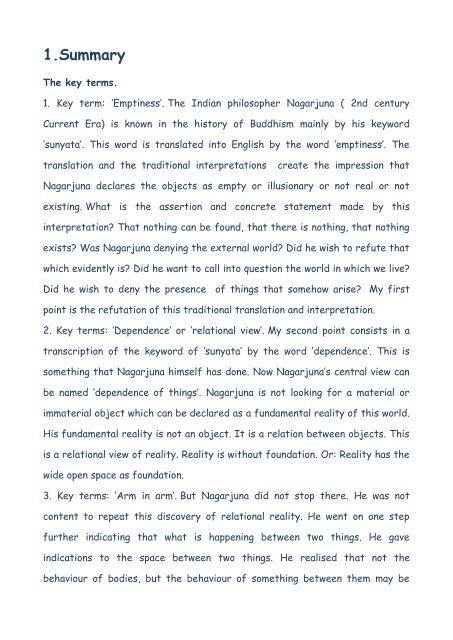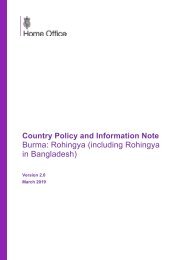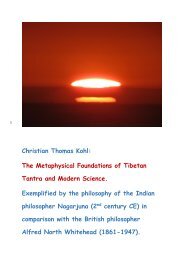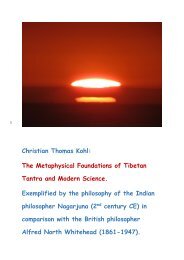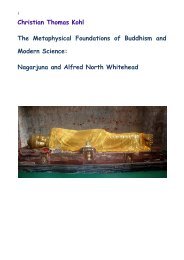The Metaphysical Foundation of Buddhism and Modern Science
The Metaphysical Foundations of Buddhism and Modern Science: Nagarjuna and Alfred North Whitehead
The Metaphysical Foundations of Buddhism and Modern Science: Nagarjuna and Alfred North Whitehead
Create successful ePaper yourself
Turn your PDF publications into a flip-book with our unique Google optimized e-Paper software.
1.Summary<br />
<strong>The</strong> key terms.<br />
1. Key term: ‘Emptiness’. <strong>The</strong> Indian philosopher Nagarjuna ( 2nd century<br />
Current Era) is known in the history <strong>of</strong> <strong>Buddhism</strong> mainly by his keyword<br />
‘sunyata’. This word is translated into English by the word ‘emptiness’. <strong>The</strong><br />
translation <strong>and</strong> the traditional interpretations<br />
create the impression that<br />
Nagarjuna declares the objects as empty or illusionary or not real or not<br />
existing. What is the assertion <strong>and</strong> concrete statement made by this<br />
interpretation? That nothing can be found, that there is nothing, that nothing<br />
exists? Was Nagarjuna denying the external world? Did he wish to refute that<br />
which evidently is? Did he want to call into question the world in which we live?<br />
Did he wish to deny the presence <strong>of</strong> things that somehow arise? My first<br />
point is the refutation <strong>of</strong> this traditional translation <strong>and</strong> interpretation.<br />
2. Key terms: ‘Dependence’ or ‘relational view’. My second point consists in a<br />
transcription <strong>of</strong> the keyword <strong>of</strong> ‘sunyata’ by the word ‘dependence’. This is<br />
something that Nagarjuna himself has done. Now Nagarjuna’s central view can<br />
be named ‘dependence <strong>of</strong> things’. Nagarjuna is not looking for a material or<br />
immaterial object which can be declared as a fundamental reality <strong>of</strong> this world.<br />
His fundamental reality is not an object. It is a relation between objects. This<br />
is a relational view <strong>of</strong> reality. Reality is without foundation. Or: Reality has the<br />
wide open space as foundation.<br />
3. Key terms: ‘Arm in arm’. But Nagarjuna did not stop there. He was not<br />
content to repeat this discovery <strong>of</strong> relational reality. He went on one step<br />
further indicating that what is happening between two things. He gave<br />
indications to the space between two things. He realised that not the<br />
behaviour <strong>of</strong> bodies, but the behaviour <strong>of</strong> something between them may be


